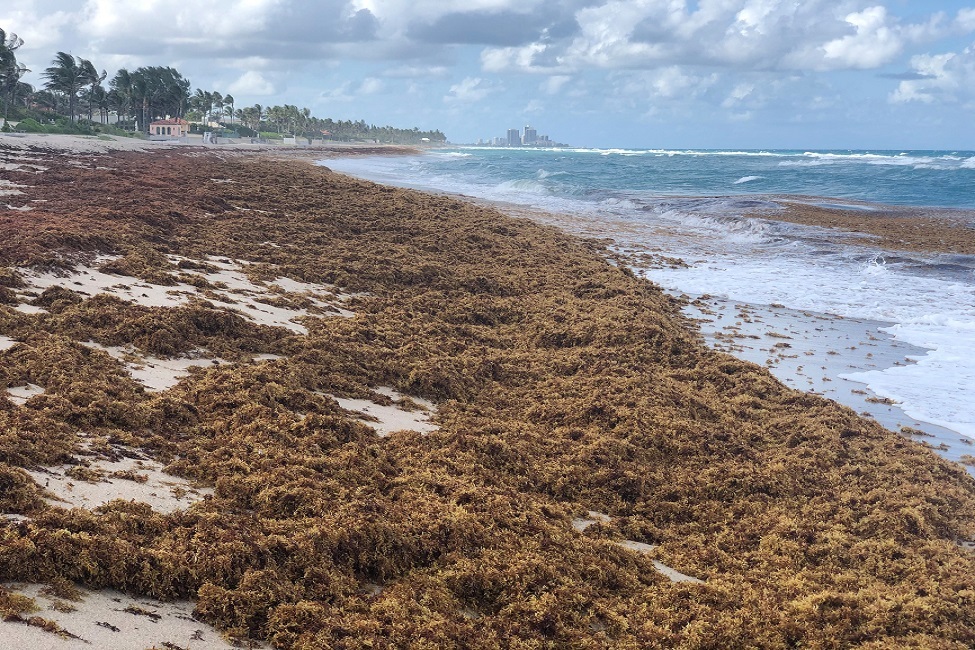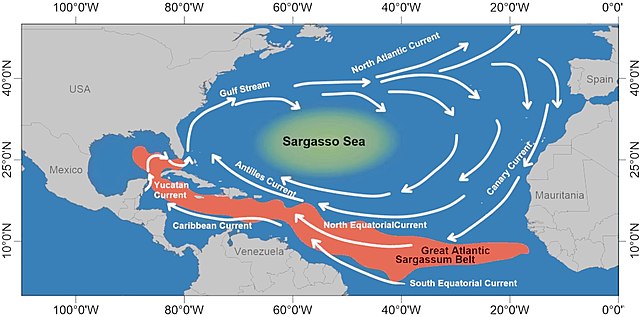 When visiting a scenic beach, is marveling at a giant, thousands-mile-long stretch of seaweed part of your vacation expectations?
When visiting a scenic beach, is marveling at a giant, thousands-mile-long stretch of seaweed part of your vacation expectations?
An enormous, biodiverse crowd of seaweed spanning over 5,000 miles and weighing over 10 million tons - known as the Sargassum belt, is floating from West Africa to the Gulf of Mexico across the mid-Atlantic.
This once-natural phenomenon has transformed into a record-breaking and devastating force. Here's what you need to know about the Great Atlantic Sargassum Belt and its growing importance.
The Sargassum Belt
Sargassum refers to several species of brown, rootless, seaweed with air-filled pockets that allow it to float. The belts - which are actually a collection of seaweed masses - historically grow in the North Atlantic Ocean, known as the Sargasso Sea. This sea is bounded by ocean currents on all sides, which carry the belts of seaweed to different Atlantic regions.
While circulating through the ocean, these island-like masses provide shelter and food for marine life, such as crustaceans, fish, turtles, and coastal birds, serving as biological hotspots similar to coral reefs. In addition to being a beneficial ecosystem, they absorb CO₂ from the atmosphere.
Since 2010, changes in the size and migration pattern of the belts have been noted, but the culprit behind it remains unclear.
Bigger, But Not Better
 Suspected causes of the sudden boom in the growth of seaweed are agricultural run-off and other human activities resulting in unnatural levels of nitrates and phosphates traveling through major riverways to the ocean. Other factors, such as nutrient-rich Saharan desert sands that blow over the oceans, may fertilize sargassum - contributing to its rapid growth.
Suspected causes of the sudden boom in the growth of seaweed are agricultural run-off and other human activities resulting in unnatural levels of nitrates and phosphates traveling through major riverways to the ocean. Other factors, such as nutrient-rich Saharan desert sands that blow over the oceans, may fertilize sargassum - contributing to its rapid growth.
Negative Impacts
Recent changes in currents and rising ocean temperatures may be causing sargassum belts to change their usual route and travel westward towards areas such as Florida, the Eastern Caribbean, and Mexico, affecting many Atlantic communities.
Currently, over 200 tons of the Sargassum Belt have washed ashore. The seaweed overgrowth chokes out sunlight to the seafloor as it stretches over shallow waters. Key species such as coral and seagrass, which require sunlight to survive, are greatly harmed by large clumps of sargassum blocking light.
Sea turtles are one of the species most impacted by seaweed landfall. Their natural laying cycles coincide with the Sargassum Belt’s resurgences on shorelines, and the huge seaweed piles—which can reach several feet high—interfere with hatchling sea turtles’ ability to navigate to water. Beach clean-up using big machinery destroys their vulnerable nests.

Searching for Solutions
Many people are researching solutions to repurpose and dispose of sargassum. It can be used as mulch; however, it carries arsenic, a heavy metal, and may poison groundwater.
Researchers are investigating methods to remove these harmful mounds in eco-friendly ways; but until effective solutions are found, the piling sargassum will continue to be a burden.
Sources: NPR, PBS, The Conversation, CNN, Forbes







